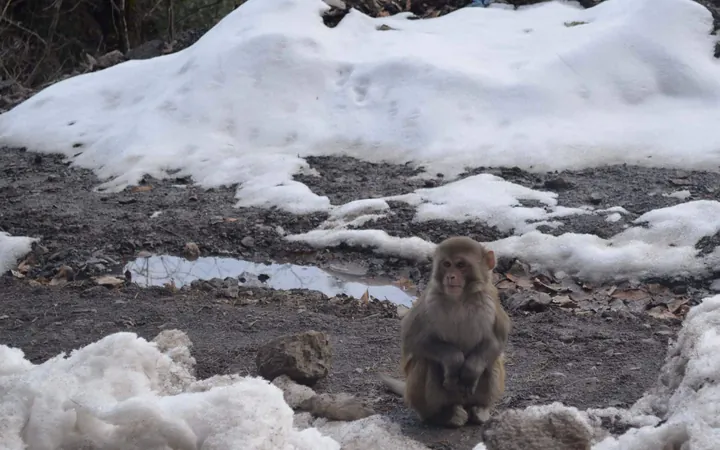
Unveiling Primate Evolution: Did Cold Climates Shape Our Ancestors 56 Million Years Ago?
2025-08-30
Author: Jacques
The evolution of primates has always intrigued scientists, but recent findings are turning conventional wisdom on its head. For years, researchers believed that primates arose in warm, lush tropical landscapes rich with resources. However, groundbreaking studies suggest that the earliest primates may have adapted to life in cold, arid environments.
A New Perspective on Primate Origins
An important article in The Conversation has sparked discussions around the climatic conditions during the inception of primate species. Researchers are now forced to reconsider the familiar image of early primates swinging through lush canopies in favor of a harsher, more variable climate that played a significant role in their development.
The Surprising Research Behind Primate Evolution
A team led by Jorge Avaria-Llautureo at the University of Reading has provided fresh insights fueled by fossil evidence. Their studies show that instead of thriving in tropical forests, early primates likely flourished in colder, drier regions. By analyzing fossil remains along with pollen and spore data, they paint a picture of adaptive evolution amidst unpredictable climates.
One prime example is Teilhardina, one of the earliest known primates that emerged around 56 million years ago. Weighing only 28 grams, it resembles today's tiniest primate, the mouse lemur, and likely feasted on fruits, gum, and insects. Originally from North America, Teilhardina's rapid dispersal into Europe and China signifies a broader range of early primate habitats.
Climate's Crucial Role in Evolutionary Change
Understanding the environmental conditions that influenced primate evolution is key to mapping how these species transitioned into their modern forms. Interestingly, it wasn't solely the shift from colder to warmer climates that propelled evolutionary changes; rather, it was the ongoing fluctuations between dry and wet periods that played a crucial role.
These ups and downs in climate likely led to the emergence of agile primates capable of thriving in diverse habitats and enduring extreme weather. Remarkably, the icy conditions faced by these ancestors mirror the struggles of certain contemporary lemurs, suggesting a similar adaptive strategy—slowing metabolic rates to survive frigid weather, akin to hibernation.
Climate Variability: A Catalyst for Evolution
The research posits that large temperature shifts—particularly transitions from arid to moist conditions—were significant drivers in primate evolution. Rather than being solely defined by episodes of warming, the variability of their environment has been shown to hold the key to the survival and adaptation of these early species. It's a fascinating reminder of how evolutionary paths may hinge on unpredictable climate challenges.









 Brasil (PT)
Brasil (PT)
 Canada (EN)
Canada (EN)
 Chile (ES)
Chile (ES)
 Česko (CS)
Česko (CS)
 대한민국 (KO)
대한민국 (KO)
 España (ES)
España (ES)
 France (FR)
France (FR)
 Hong Kong (EN)
Hong Kong (EN)
 Italia (IT)
Italia (IT)
 日本 (JA)
日本 (JA)
 Magyarország (HU)
Magyarország (HU)
 Norge (NO)
Norge (NO)
 Polska (PL)
Polska (PL)
 Schweiz (DE)
Schweiz (DE)
 Singapore (EN)
Singapore (EN)
 Sverige (SV)
Sverige (SV)
 Suomi (FI)
Suomi (FI)
 Türkiye (TR)
Türkiye (TR)
 الإمارات العربية المتحدة (AR)
الإمارات العربية المتحدة (AR)